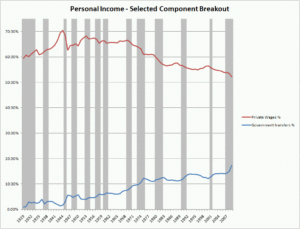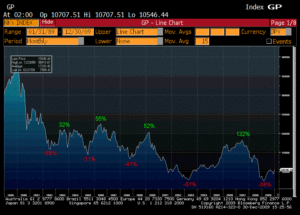Tomorrow, Saturday May 2nd, 2015, Warren Buffett and Charlie Munger will hold court over a crowd of 40k+. As they do every year, they will spend several hours answering questions about the current and future workings of Berkshire Hathaway. Three journalists and three investment analysts will ask the questions.
If we were given the opportunity to ask a question, we would focus on Berkshire Hathaway Energy -BHE – (formerly MidAmerican Energy) and the threat to traditional utility businesses from distributed generation (DG).
During 2014, BHE provided 9% of Berkshire’s revenue and 11% of pre-tax operating earnings. In the most recent annual letter, Mr. Buffett refers to BHE as one of the “Powerhouse Five” collection of Berkshire’s largest non-insurance businesses. He goes on to write, “a century hence, BNSF and Berkshire Hathaway Energy will still be playing vital roles in our economy.” Later, he adds that BHE has “recession-resistant earnings, which result from these companies offering an essential service on an exclusive basis.”
Their conviction is very high. We wonder if both Messrs Buffett and Munger are underestimating the potential threat from distributed generation (i.e. power generated at the individual household level using solar technology). Is it possible that the developments in Hawaii described in detail in a recent NYTimes article are just the beginning?
BHE has invested $15B in renewable energy generation capabilities and is the largest generator of renewable energy in the US. In addition BHE’s largest subsidiaries are in geographies with no immediate threat (the ratio of sunlight to traditional generation fuel cost is favorable). Yet, solar is not a typical fuel source. It is a technology that behaves according to Moore’s Law – every year it is twice as efficient and half the price as the previous year.
So, if we had the floor for a minute in Omaha tomorrow, here is what we would ask: “Messrs Buffet and Munger, what if technology made it so BHE was no longer the exclusive provider of power in its covered geographies? Doesn’t solar offer the possibility that the distribution component of the regulated utility industry shrinks significantly in size? BHE uses solar as a fuel source, but that alone can’t neutralize the threat. Solar has the potential to be much more than a substitute for coal or gas in the old utility regime. Centralized power generation isn’t necessarily ideal. In the past it was just the only practical option. Today, decentralized power generation is just as practical in a few locations (e.g. Hawaii), but it is becoming so in more and more geographies by the year. The efficiency of solar is increasing and the cost decreasing at a rate commensurate with Moore’s Law – and it should, as solar panels are similar in structure to computer chips. As this trend continues, individual solar power generation will become practical in more and more locations. And so, how can you be so confident in BHE’s ability to earn a “good” return long into the future? Is it possible that solar may be to the utility industry what the internet was to the newspaper business?”
We remain long $BRK, confident in the overall business mix, the broad diversification, and the “moat” that accrues from the structure Mr. Buffett has developed over the last 50 years. We are also optimistic that BHE managers can adjust the business to new realities over time. Still, we would like to hear some additional details on how they think about the distributed generation threat.
Long $BRK.



